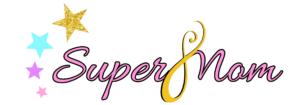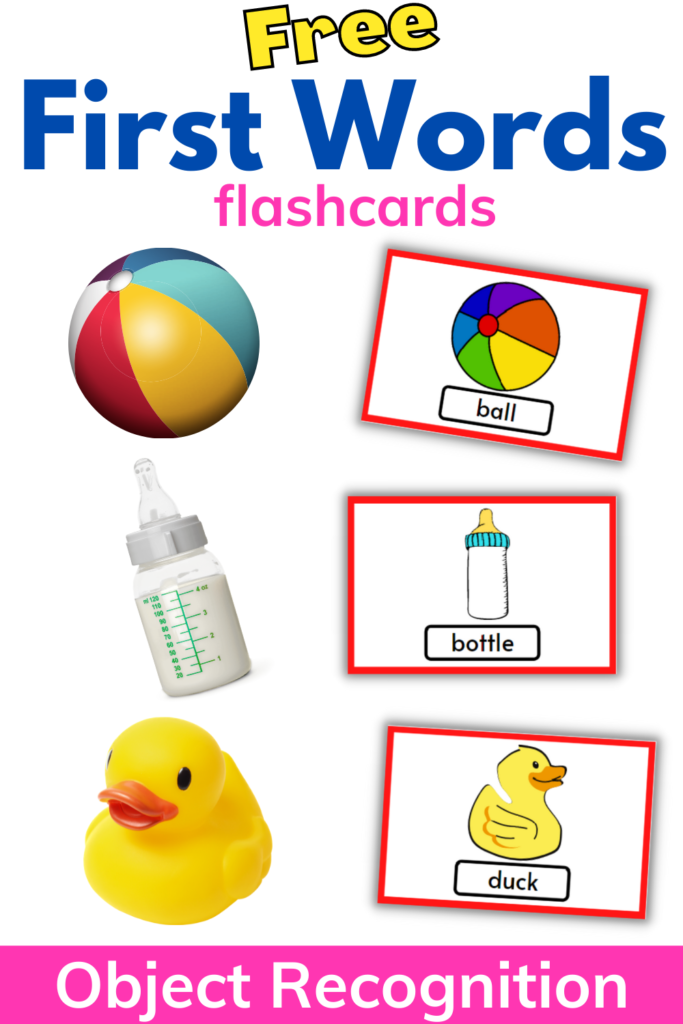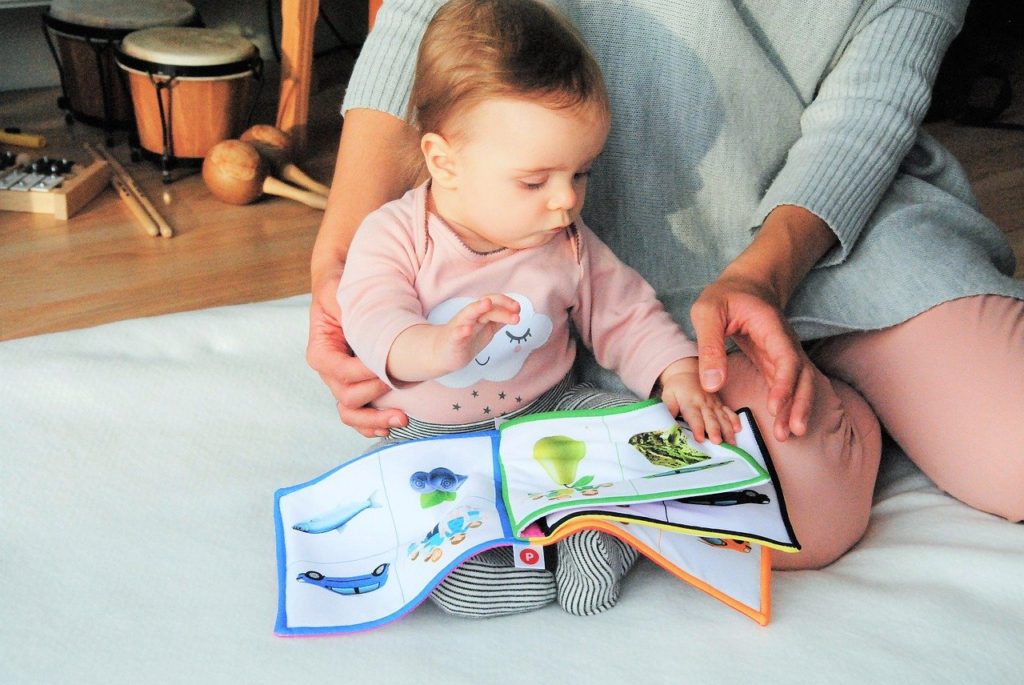
Strategies to encourage Speech and Language Development for Babies and Toddlers
The development of speech and language may not come as easy for some toddlers. As your child grows and develops, you will notice how much they have grasped hold of their environment and their developing skills. Children learn from everything they observe, hear and feel. Especially from their caregivers. Here are the ten most recommended strategies to encourage speech and language development.
Baby and Toddlers Speech and Language Development
Start teaching speech and language skills early. When your little one is exploring and trying to figure out the world around them, they begin to grasp hold of every teaching experience. My toddler was diagnosed with a speech and language delay. I remember implementing a few of these strategies near age eighteen months. I honestly felt I should have started earlier. My teaching strategies become consistent and included in her daily routine.
Speech and Language Delay Vs. Hearing Deficit
Every day and every activity is a learning experience for your child. They will pick up the little sounds and turn their little heads to observe where it’s coming from. This action is a great indicator, your child is hearing well.
Hearing Deficit “Red Flags”
Hearing deficits become noticeable to parents and caregivers at about 1 year of age. At one your child’s actions and needs are more noticeable. You have observed your child and learned them in and out. With your observation and routine clinical appointments, you will become more familiar with hearing deficit red flags. You will learn the difference between your child being overly distracted and ignoring your requests and not responding to you during or without distractions. Hearing deficit red flags can be seen during the early years of development. Most developmental deficits are observed at your child’s 18-month check-ups. Here are a few early indicators of hearing deficit in young children.
- Not turning their head to sudden noises
- Not responding to you or others
- Continues to babbles at 18 months
- Use more sounds than words
Developmental Check Ups are Important
Your child’s provider will ask you a tone of question about your child’s growth and development. These are questions that maybe only you have the answers for. You will also receive questionnaires that open the doors for early intervention. Early Intervention is the key to achieving assistance with your child’s developmental growth. It’s also the key to your child’s daily progress.
Toddler Speech Delay Diagnosis “Short Story”
Toddlers are on their adventure in learning and exploring everything. They are always on the go and trying to figure out new things. At our daughter’s 18 month check-up, we received a developmental questionnaire. This questionnaire asked questions like “Does your child say 3 to 5 words? Is your child pointing to or understanding your requests? Most of our answers were no and not yet. The questions we answered no led to a speech/communication delay red flag. Our pediatrician wasted no time developing a care plan. Not only a care plan but a care team for our child. She then was diagnosed with a speech delay. I wanted to help her in any way. After becoming more familiar with this diagnosis and observing her communications skills. I want to help her make progress and succeed. We incorporated a tone of at-home activities into her daily routine. Here are my most helpful and recommended strategies to encourage your toddler to memorize, understand and identify sounds and words.

#10 Speech and Language Communication Strategies
Speech and Language Strategy #1 Eye Level
Position yourself at eye level when communicating with your child. This action will target your child’s attention. Your child can easily see your mouth, facial expressions and hear you more clearly. You can also see if your child is trying to imitate or give a response. This can also help you to observe areas of weakness and strengths. You may see your child trying to make the ‘b’ sound but no sound is coming out. These are the things you can keep notes on and continue practicing at home or collaborate with your child’s therapist.
Speech Development #2 Sound Repetition
What is sound repetition?
Sound repetition is the repeated use of the beginning letter or letters of the word.
For example, if you want your child to say the word ball, you will repeat the ‘b’ sound before you say the word ball. That will look like this, ‘b’ ‘b’ ‘b’ ball! This verbal action will likely encourage your child to grasp either the ‘b’ sound or the word ‘ball’.
You can use sound repetition with a variety of words throughout the day. Sound repetition is a great vocal encouragement for your child to see the positioning of your mouth and lips. This can help them with memorization and imitating sounds.
Language Development #3 Word Repetition
Word repetition is very similar to sound repetition. Let’s jump right into it.
What is word repetition?
Word repetition is the repeated use of one word. Word repetition encourages language development.
For example, if you want to teach your child the word book, you will show the book and repeat the workbook. That will look like this, Mommy will read you a ‘book’…. ‘book’…. ‘book’. Leaving a small pause between each repeated word can give your child the opportunity to memorize, understand and identify the word. This will encourage your child to try and mimic or say the word.
Speech and Language Strategy #4 Pointing
Pointing is an early communication skill. Your child will use pointing as an indicator for their needs and wants. Pointing is encouraged to assist with recognition. I also like to describe pointing as the “Show and Tell Method”. You will show your child an image, object, person, etc., by pointing and saying the word. This is their way of understanding and learning the use of words. In return, your child will use pointing to communicate their needs and wants.
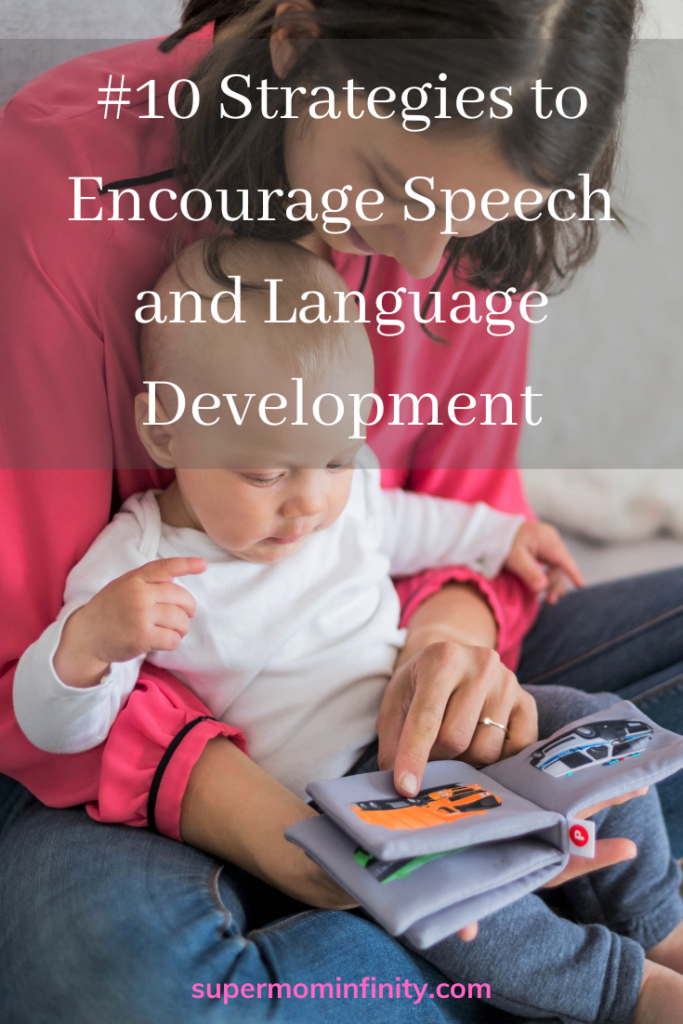
Speech and Language Communication #5 Choice Making
Offering choices to your child by bringing forth the object when stating the object’s name or by pointing. This method registers to your child’s understanding. Your child will continue to learn the purpose of words. You are also encouraging open-end learning and return demonstration.
Language Communication #6 Sign Language
We began sign language shortly after our daughter’s speech delay diagnosis. Sound and word pronunciation was challenging for her and I really wanted to understand and develop her communication level. The sound coming out of her mouth was not matching the things she was pointing at. This is why we chose to teach her basic sign language. Sign language did not stop her vocal communication, or limit her vocal skills because I continue to use all of these strategies. I will say and demonstrate the sign using both the sound and word repetition strategies. We would practice the signs daily. I would encourage her to say the word of the sign. She then began to eliminate a few signs altogether and say the word with little to no difficulties. Yayyy! I was really happy about this.
Speech and Language Development #7 Sing Daily
Your child loves your voice no matter if you think you’re not a good singer. Your child absolutely believes you are. Signing draws in your child’s attention, encourages eye contact, and returns demonstrations, especially when you sing action songs. Routine singing can encourage speech and language development for your child.
Speech and Language Strategy #8 Read Daily
The repetition of words used daily encourages your child to memorize, understand and identify. Reading allows your child to explore and participate by pointing, using gestures and imitating sounds/words.
Speech Development #9 Talk All Day
Talk to your child all day and every day. Parents within a week you will observe an increase in your child’s speech and language development. For example, when feeding your child you can say the word “eat”. Not just once, but like 20 times during breakfast, lunch and dinner. You can also create an eating song. Sound and word repetition will encourage your little one to recognize words. Here’s how!
Say the word eat three times during each meal. That’s nine times a day for breakfast, lunch, and dinner. Let’s multiply the word (eat) by 9 for seven days. You guys that 63 times you have said the word eat in a week. Just imagine saying the word eat 10 times during each meal for a week. The word (eat) will total to 210 times your child has heard the word (eat) in a week. Speech and Language Developmental skills will appear as understanding the word by pointing to their designated eating area upon hearing the word (eat. Your child may try and say the word (eat) and possibly utilize the sign language for the word (eat).
Speech and Language Strategy #10 Routine
Creating a consistent speech and language developmental routine is very important. Unknowingly, you talk and may even be very descriptive when talking to your child. That is perfect and definitely an invention for children with a speech delay.
Here is an example schedule on how easy speech and language strategies can be implemented into your child’s daily routine.
- Always say, “good morning” to your child.
- Sing the “Brush Your Teeth” song.
- Repeat the word eat during all meals.
- Go outside and describe their surroundings. (Car, tree, sun, rain, rocks, grass, etc.)
- Use bath time as an opportunity to practice letter sound with foam alphabets.
- Sing or read a book before bed.
Routines are great for repetition. Your child will begin to memorize, understand and participate in the routine. He or she will become familiar with words you’re repeating daily. You may see signs of understanding by your child pointing to the tree or car outside. This is a great indicator your child is grasping communication development.
Speech Activity for Babies and Toddlers
20 First-word flashcards for babies and toddlers are here for your early learner. Encouraging memorization, understanding, and object recognition with 20 free first words for kids.
First Words For Babies and Toddlers
Visuals are used during early childhood development to encourage recognition. The more your child views an image or an object they begin to memorize it and understand its purpose. Visuals can help your child identify images within their environment. Your child will show you their understanding by pointing or trying to say what the image/object is. This is a fantastic first step into your little one’s early learning journey.
Speech Development Printables for Kids
My First Words Learning Binder includes 20 first-word images and 30 activity pages with a ton of repetition. Repetition is included to give your early learner the opportunity to memorize the words and images throughout the binder. Your child will then begin to understand the images and words leading to recognition of all 20 images.
First Words learning binder is a great hands-on learning activity you can teach your little one at home. Include the 10 strategies listed above as your teaching guide for best practice.
My First Words Learning Binder has advanced features that can be introduced early or when your little one indicates readiness. Special education features such as the implemented repetition and strategies, follow throughout the binder.
Discover Early Learning, Special Education, and Autism Activities/Learning Resources at SuperkidsInfinity
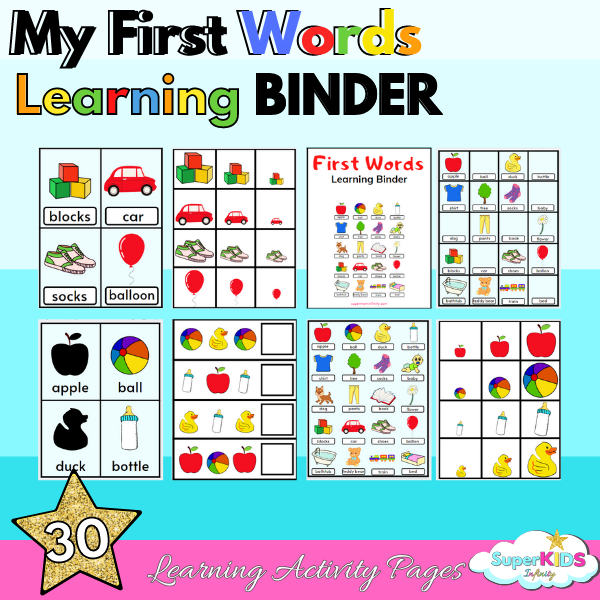
Speech and Language Developmental Rewards
Praising your child frequently!!! Let him or her know that they are doing a great job. Give your child a hug or high five. Share their hard work and success with a family member. The more the merrier. Praise is needed to build your child’s esteem and it can also encourage their independence.
Giving credit for trying and accomplishing strategies is my favorite motivator. Include praise within and around every activity. Praise! Praise! Praise!
